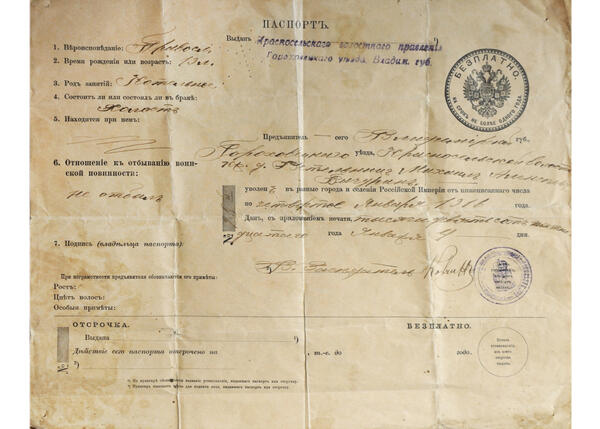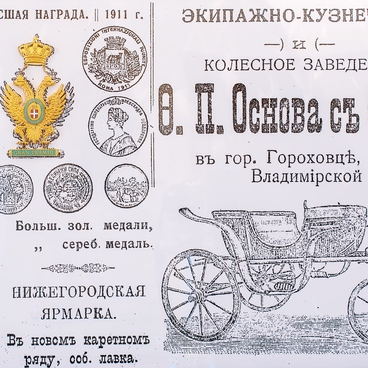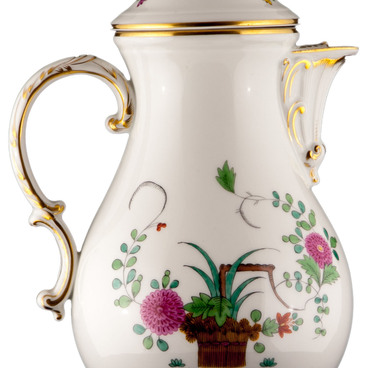Undoubtedly, the concept of “boiler maker” is the collective name, and Vladimir Ivanovich Dahl was quite correct considering the boiler makers (boiler men) as the master craftsmen, that is to say the specialists who knew how to perform all operations in the manufacture of boilers.
The boiler makers in the Gorokhovets sheading are mentioned for the first time in the documents of the late 18th century.
In the work of Ludwig Bacmeister “The topographical sketch of the cities of the Vladimir, Suzdal, Pereslavl and Yuryev-Polsky Provinces in 1760” we find the information on the occupations of the people in the town of Gorokhovets: “Among the citizens of the town there are some bell foundry men, boiler makers, blacksmiths, silversmiths… “. The alcohol-distillation developed in the southern uphill part of the Gorokhovets sheading and distillation of resin and tar in the northern part beyond the Klyazma River required the use of special equipment, the main components of which were the metal vats, boilers, water heaters, tanks, etc. Probably, this equipment was initially manufactured in Gorokhovets, but gradually the geography of its manufacture began to go beyond the sheading. As demand for their products increased the distillers from Krasnoselskaya volost (small administrative district of czarist Russia), mainly inhabited by the court peasants, began to expand the production and bring it closer to the area of manufacture of raw materials for distillation of alcohol in the Volga region, Ukraine, the southern provinces of Russia, Kuban, North Caucasus and Western Siberia. There they began to produce equipment for distilleries, attracting for this purpose their fellow countrymen engaged in the craft of boiler building in the Gorokhovets sheading. In the 5th volume of “The materials for assessing the lands of the Vladimir province”, which examines the state of the crafts of the Gorokhovets sheading, in the section “The boiler makers” the authors of this work published at the very beginning of the 20th century (1901) noted the following: “The second most widespread craft in the Gorokhovets sheading is leaving for seasonal work as the boiler maker. Its area is Kozhinskaya volost and Krasnoselskaya volost. Earlier in this area the workers left for the distilleries and malt factories. Some villages almost entirely leave for seasonal work as the boiler makers. This craft appeared relatively recently, 15-20 years ago..... A new craft was taken over from the peasants that live in the villages located in the mouth of the Klyazma River, where they have been left as the boiler makers for a long time and where the best craftsmen now come from”.
The teenage boys 13-14 years old, educated, able to read and count, were taken as apprentices of the gang bosses, since the work was connected with reading drawings. For several years the boys were picked up for work with the experienced artisans, adopting the skills and knowledge.
The boiler makers in the Gorokhovets sheading are mentioned for the first time in the documents of the late 18th century.
In the work of Ludwig Bacmeister “The topographical sketch of the cities of the Vladimir, Suzdal, Pereslavl and Yuryev-Polsky Provinces in 1760” we find the information on the occupations of the people in the town of Gorokhovets: “Among the citizens of the town there are some bell foundry men, boiler makers, blacksmiths, silversmiths… “. The alcohol-distillation developed in the southern uphill part of the Gorokhovets sheading and distillation of resin and tar in the northern part beyond the Klyazma River required the use of special equipment, the main components of which were the metal vats, boilers, water heaters, tanks, etc. Probably, this equipment was initially manufactured in Gorokhovets, but gradually the geography of its manufacture began to go beyond the sheading. As demand for their products increased the distillers from Krasnoselskaya volost (small administrative district of czarist Russia), mainly inhabited by the court peasants, began to expand the production and bring it closer to the area of manufacture of raw materials for distillation of alcohol in the Volga region, Ukraine, the southern provinces of Russia, Kuban, North Caucasus and Western Siberia. There they began to produce equipment for distilleries, attracting for this purpose their fellow countrymen engaged in the craft of boiler building in the Gorokhovets sheading. In the 5th volume of “The materials for assessing the lands of the Vladimir province”, which examines the state of the crafts of the Gorokhovets sheading, in the section “The boiler makers” the authors of this work published at the very beginning of the 20th century (1901) noted the following: “The second most widespread craft in the Gorokhovets sheading is leaving for seasonal work as the boiler maker. Its area is Kozhinskaya volost and Krasnoselskaya volost. Earlier in this area the workers left for the distilleries and malt factories. Some villages almost entirely leave for seasonal work as the boiler makers. This craft appeared relatively recently, 15-20 years ago..... A new craft was taken over from the peasants that live in the villages located in the mouth of the Klyazma River, where they have been left as the boiler makers for a long time and where the best craftsmen now come from”.
The teenage boys 13-14 years old, educated, able to read and count, were taken as apprentices of the gang bosses, since the work was connected with reading drawings. For several years the boys were picked up for work with the experienced artisans, adopting the skills and knowledge.



